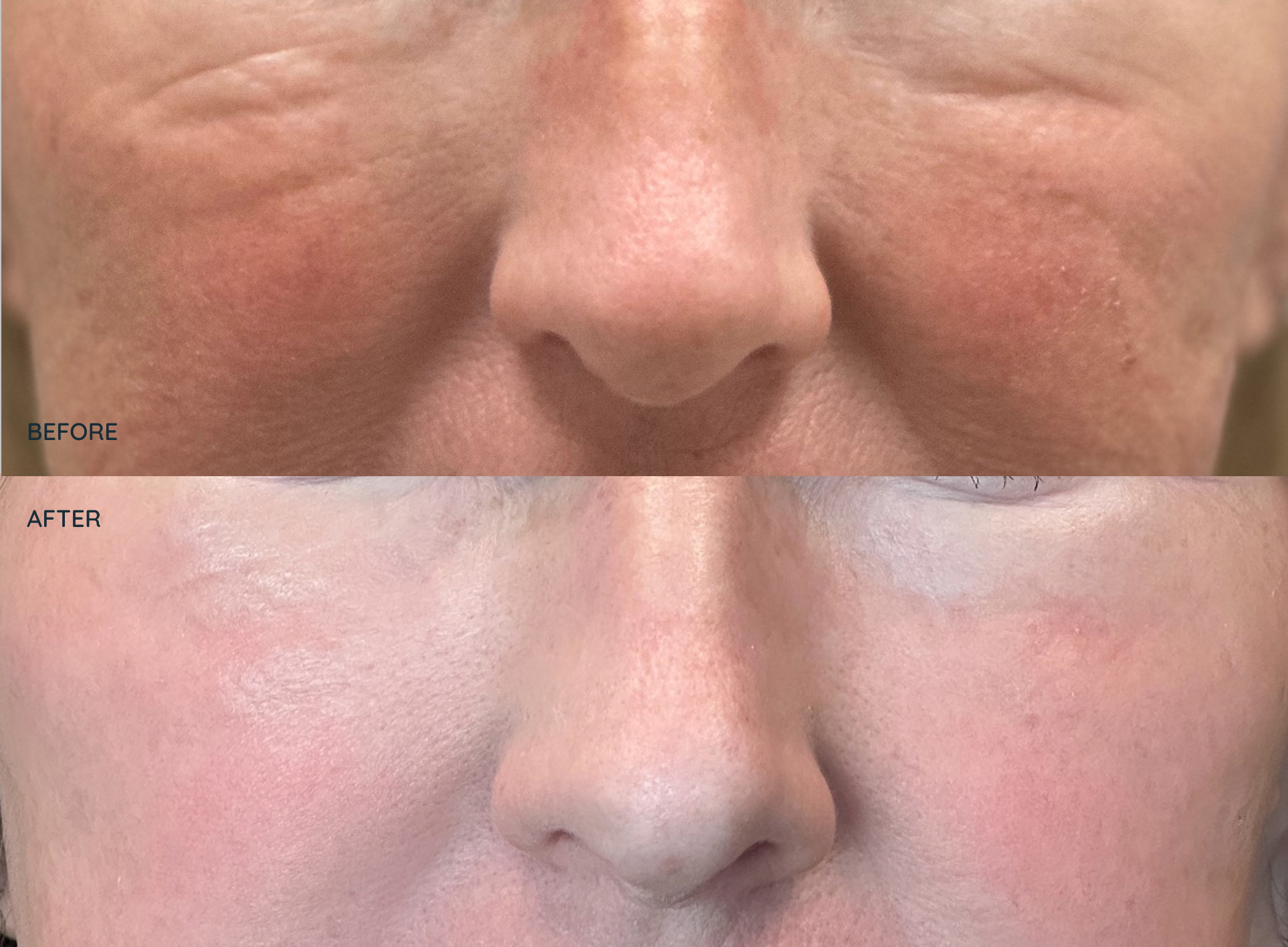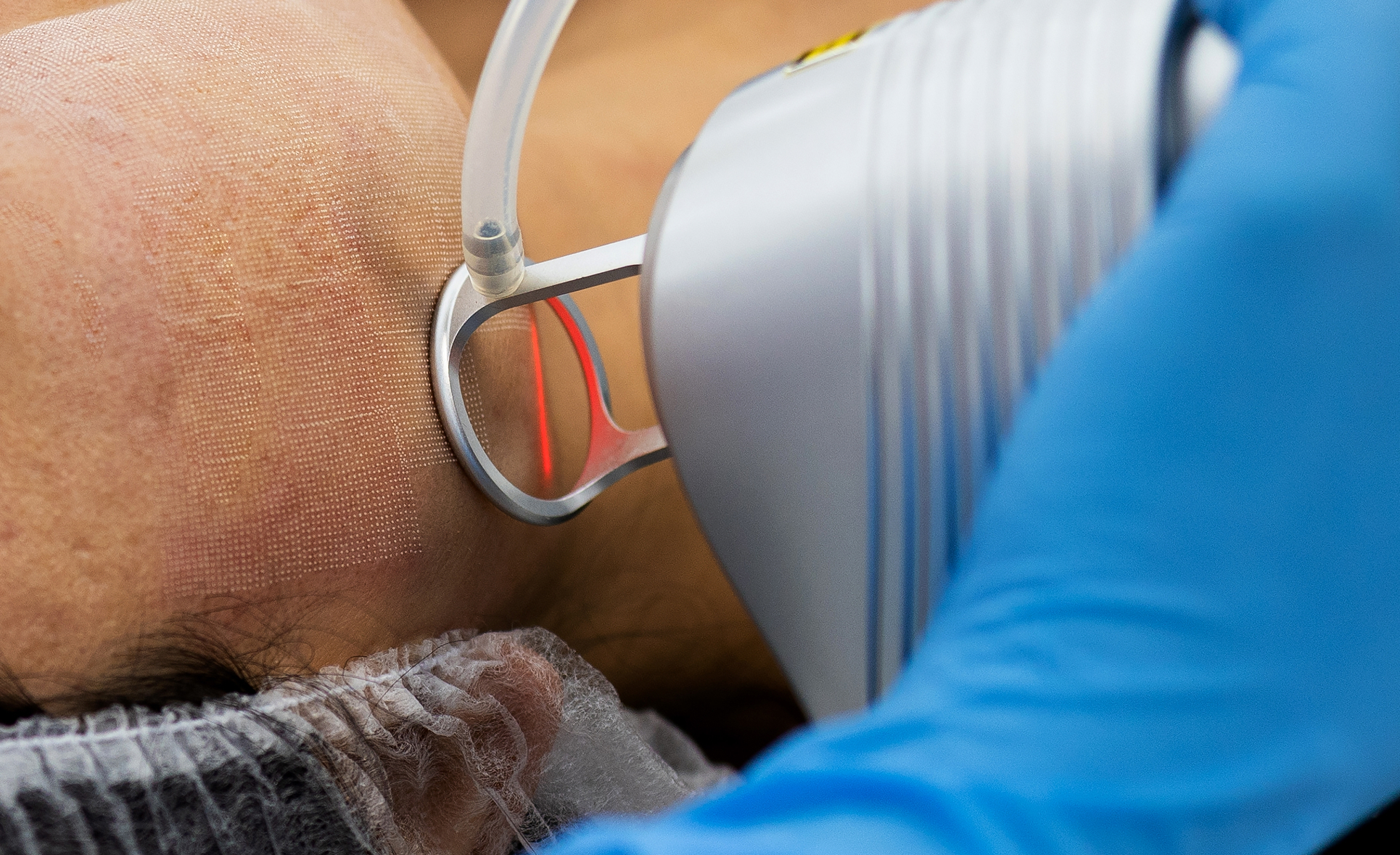CO2 Laser Skin Resurfacing Treatment
Smooth Out Wrinkles and Scars – Restore Your Skin’s Texture and Firmness
CO2 laser resurfacing targets wrinkles, acne scars, loose skin, and texture issues by stimulating collagen for smoother, firmer skin.
CO2 laser skin resurfacing works by creating controlled micro-tears in the skin that trigger collagen production and tissue renewal. A handheld CO2 laser device delivers focused energy to the skin, forming a pattern of tiny dots or grids. These micro-tears allow the skin to regenerate, becoming firmer and smoother over time.
CO2 resurfacing is best for individuals with aging skin, acne scarring, or significant texture concerns. It addresses deep wrinkles, rough patches, and loss of skin firmness that topical products cannot improve. If you’re noticing deep lines, or uneven tone, this treatment may be appropriate.
Patients in their late 30s to 60s often choose CO2 when other options haven’t delivered the results they want. If you’re younger and struggling with acne scars, the lighter version—sometimes called the “weekend” treatment—can still provide benefit with reduced downtime.


CO2 laser treatment is not a facelift, though the results can offer noticeable skin tightening. A facelift lifts the skin through surgery which addresses loose skin. CO2, by contrast, improves both fine and deep lines, skin texture, improves acne scarring, and improves unwanted pigment.
Unlike a chemical peel, which addresses the superficial layers of our skin using chemical exfoliants, CO2 reaches deeper triggering a greater healing response. At Allura, we encourage preparing your skin for your CO2 treatment with one of our professional peels to enhance your CO2 results.


Sun exposure is a major risk factor before and after CO2 treatments. Patients must avoid direct sunlight for at least four weeks before and four weeks after each session. Even mild exposure—like driving without SPF—can interfere with healing or cause pigmentation changes.
Because of this, most CO2 treatments are scheduled between October and early spring at our clinic. You’ll be asked about recent sun exposure during your consultation to ensure your skin is safe to treat.


Most people benefit from two to three sessions spaced two months apart. The exact number depends on the severity of your skin concerns and how well your skin responds to the first treatment. In some cases, a single treatment is enough, especially when combined with consistent skincare.
We’ll recommend a plan based on your age, skin type, and goals. Each session builds on the results of the last, but proper aftercare and sun protection are required between treatments.


Healing from CO2 treatment usually takes several days to two weeks, depending on the settings used. You may experience redness, swelling, and peeling during the healing phase. Dots or a grid pattern may be visible for a few days after the procedure.
This is not a lunch-hour treatment. Plan for some downtime, especially after your first session. Many patients schedule time off work or choose to stay home while the skin heals.


Post-treatment care is essential for proper healing and best results. You’ll need to follow a skincare routine that includes cleansing, moisturizing, and applying medical-grade products recommended by your provider. Daily use of mineral SPF 30+ is mandatory.
Avoid active ingredients like retinol, AHAs, or BHAs before and after treatment. We’ll also review which products to stop one week in advance. Maintaining a full skincare system, not just individual products, is important for long-term improvement.


Pricing begins at approximately $500-$1070 depending on the treatment area. During your consultation, we’ll give you a full breakdown of costs and product options.
Packages often include a complementary peel and access to medical-grade skincare tailored to your treatment level.


Booking starts with a consultation. We’ll assess your skin, review your history, and create a treatment plan that fits your needs and timeline. You’ll learn how to prepare your skin, what to expect during healing, and how to protect your results afterward.
At Allura, our team brings medical training and real-world experience to every treatment. You’ll be supported through the entire process—with clear guidance, clinical safety, and results you can see.


If you’re ready to refresh your look with natural results, we’re here to help. Book your appointment with one of our trusted medical aesthetic providers at Allura Clinics, here in Dieppe, and take the first step toward feeling more confident in your appearance.
REQUEST A PRIVATE CONSULT